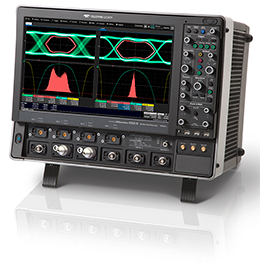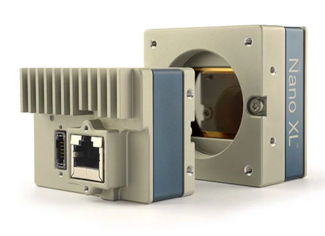Teledyne LeCroy - Transmission Line Probes
Transmission line probes are a special type of passive probe designed for use at very high frequencies. They replace the high impedance probe cable found in a traditional passive probe with a precision transmission line, with a characteristic impedance that matches the oscilloscope input (50 Ohm). This greatly reduces the input capacitance to a fraction of a picofarad, minimizing the loading of high frequency signals. A matching network at the tip increases the DC input resistance. While they have lower DC input resistance than a traditional passive probe (usually 500 Ohm) to 1kOhm), the input impedance of these probes remains nearly constant over their entire frequency range. A traditional /10 passive probe will have a 10 MOhm) input impedance at DC, however this impedance drops rapidly with frequency, passing below the input impedance of a transmission line probe at less than 100 MHz.
Transmission line probes are a special type of passive probe designed for use at very high frequencies. They replace the high impedance probe cable found in a traditional passive probe with a precision transmission line, with a characteristic impedance that matches the oscilloscope input (50 Ω). This greatly reduces the input capacitance to a fraction of a picofarad, minimizing the loading of high frequency signals. A matching network at the tip increases the DC input resistance. While they have lower DC input resistance than a traditional passive probe (usually 500 Ω to 1kΩ), the input impedance of these probes remains nearly constant over their entire frequency range. A traditional ÷10 passive probe will have a 10 MW input impedance at DC, however this impedance drops rapidly with frequency, passing below the input impedance of a transmission line probe at less than 100 MHz.
In some applications, transmission line probes offer advantages over active probes. In addition to being less expensive, their passive design is more robust to over voltage and ESD exposure. They are useful in applications producing fast rising, narrow pulses with amplitudes which exceed the dynamic range of active probes. They also tend to have less parasitic effects on frequency response. A high BW transmission line probe driving a sampling oscilloscope can be used as a "golden standard" in situations when the response of an active probe measurement is questioned.
|
Electrical Characteristics |
|
|---|---|
|
Bandwidth |
DC to 7.5 GHz |
|
Risetime |
< 47 ps |
|
Input C |
< 0.25 pF |
|
Input R |
500 Ω (÷10 cartridge) 1000 Ω (÷20 cartridge) |
|
Maximum Voltage |
15 V rms |
|
Cable Length |
1 m |
|
Products |
|
|---|---|
|
7.5 GHz low capacitance Passive Probe, 500/1K Ohms |
|









